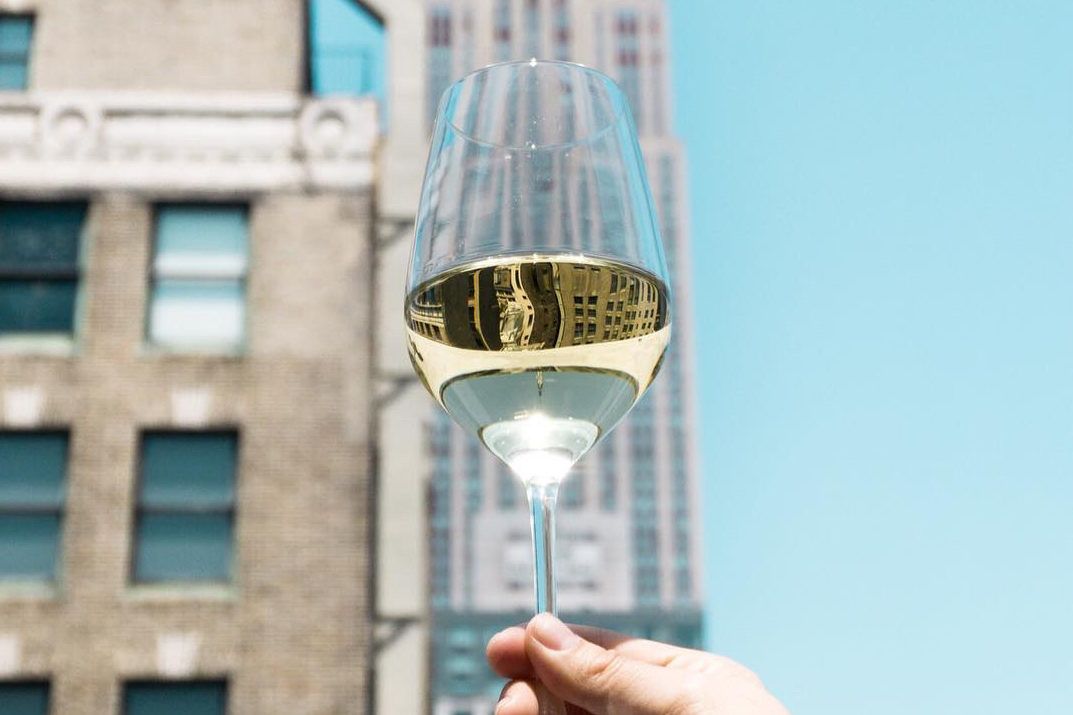Peter Dean tastes through a range of Riesling from ‘old hands’ and ‘young guns’ and picks out six that you should have on your radar.
There are few wine regions in the world right now that are pushing the envelope quite like New York State. Wineries are setting up in a range of rural and urban set-ups with bewildering speed and with a bewildering array of grape varieties. It’s almost as if, having been shackled by restrictive post-Prohibition State laws and hindered by a wine image problem, New York is trying to make up for lost time.
There are some genuinely exciting wines from: Abe Schoener’s biodynamic Macari Chardonnay made in downtown Brooklyn, Blaufränkisch from the Channing Daughters, all manner of stylish Cabernet Francs through to Forge’s 11 single vineyard Rieslings made at Seneca Lake by iconic Rhöne producer Louis Barroul . And that’s not even taking into account a quarter of the wines that are heirloom, French-American hybrid varieties that appear hardly anywhere else in the world.
It’s wine geek and somm heaven.
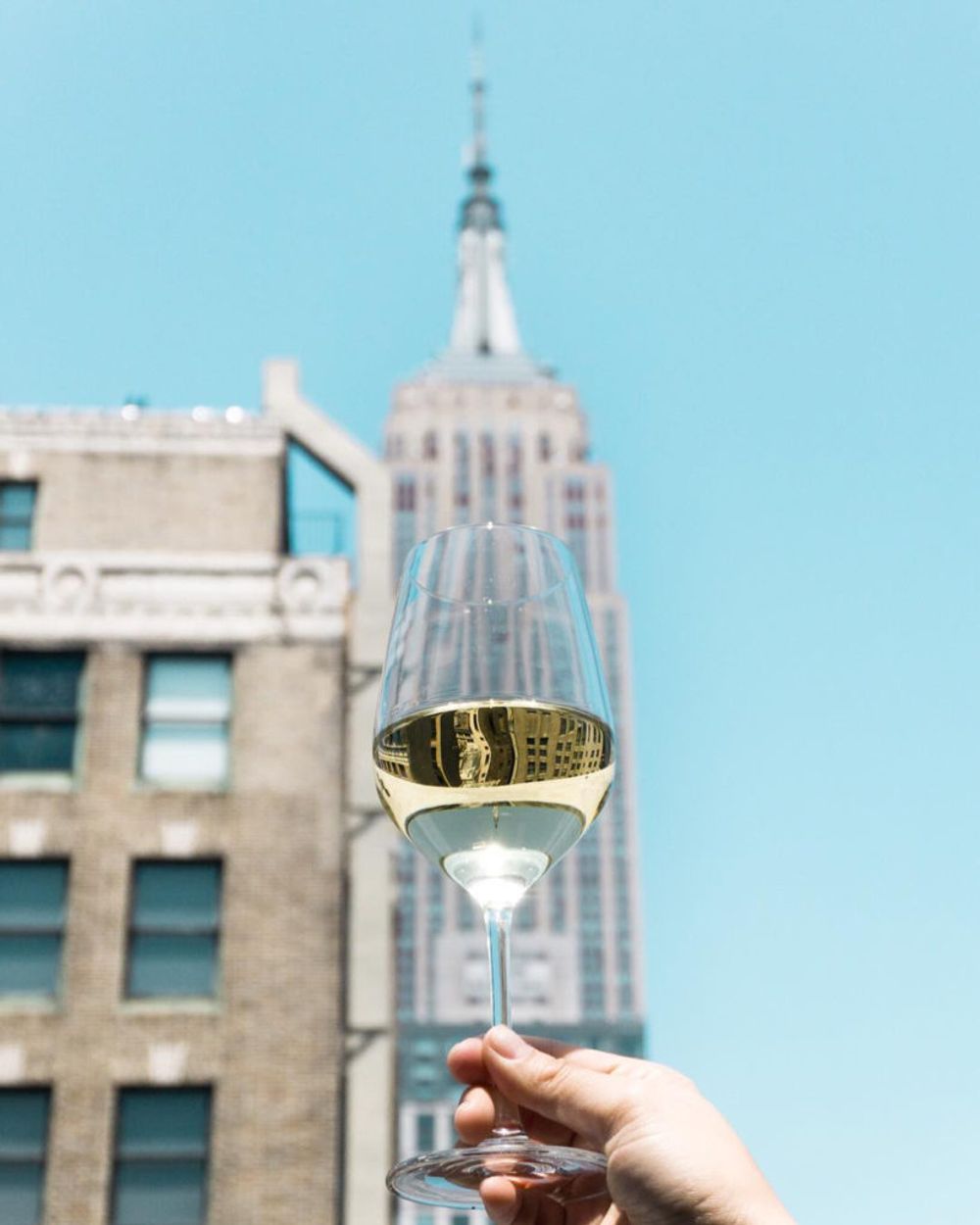
If one variety epitomises New York it is Riesling
During Lockdown I’ve been experimenting with a wide range of New York wines and will write about some of the more unusual wines in Part 2. For this piece I am concentrating on Riesling – the variety that grows really well here and which is the wine that, if you had to choose just one variety, epitomises New York.
Early beginnings
Riesling grows across the region but at Finger Lakes it finds its purest and most expressive styles. The reason is a confluence of geology, climate and history.

For Riesling, Finger Lakes is a sweet spot where varied, quality soils meet cool climate
The landscape of Finger Lakes is unusual in that it is 11 thin lakes that run North-South and have been almost torn out of the bedrock by wave after wave of receding glaciers during the last ice age – these created deep lakes but also left behind a large and diverse array of soil types. The lakes create a microclimate that helps mitigate the winter cold and creates a light breeze to cool down summer days. And it was both these factors that was recognised by European immigrants in the 1950s who planted the first Vitis Vinifera and proved Finger Lakes was a wine region that no longer had to put up with making sub-standard sweet wines from Vitis Labrusca species, like Catawba, Niagara and Concord – think Welch’s grape juice.
Many of the immigrants to this region were from Germany, or thereabouts, and it also soon became apparent to all winemakers that Riesling yielded the most successful results.

A new generation of winemakers changing the style
For Riesling, Finger Lakes is a sweet spot where varied, quality soils meet cool climate, the combination of which is perfect for a grape with high acidity and transparency about communicating where it is grown. After all, Riesling is a mirror for the effect of terroir and can be made in such a variety of styles. Until fairly recently the style favoured by winemakers here was semi-dry, the wines were still often austere and tart.
But in the past decade there has been a sea change to a dry style, effected largely by a new breed of winemaker in their 20s and 30s – locals returning to their roots after gleaning global winemaking experience; graduates of the wine programme at Cornell University; and other who have worked their way up in some of the pioneering and most established wine estates.
This new dry style has gone hand-in-hand with changes in viticulture: giving the fruit more hang-time, pressing whole bunch, fermenting in large format, neutral oak and leaving the wines to rest on their gross lees almost until bottling. The results have been spectacularly successful and have gone hand-in-hand with recognition by bars and restaurants in New York City who have been squaring the circle.
Because the pioneering immigrant Dr. Konstantin Frank had the foresight to plant with phylloxera-resistant root stock, this region has some of the oldest vines in the United States, most of them Riesling. But what is most surprising about the new-style Riesling is the quality that is coming from very young vines – a fact that augurs well for the future growth. When Frank established itself in the 1960s there was just a handful of wineries at Finger Lakes and now there are, count ‘em, 420. There is such an exciting influx of new winemaking talent here.

Not only have the bars and restaurants in the Big Apple pushed the category but some of the city’s top sommeliers have wine projects here and are creating a halo effect around the region which other sommeliers are picking up on.
Christopher Bates MS is behind Element winery, Thomas Pastuszak behind Empire Estate while Pascaline Lepeltier MS is making wine (not Riesling) at chëpìka. Other new wineries making Riesling that are worth having on your radar include Onyare, Osmote, Nathan K, Trestle 31, Nine-Four, Barry Family Cellars, Randolph O’Neill, and Mark T Wiltberger Cellars.
Tasting six of the best
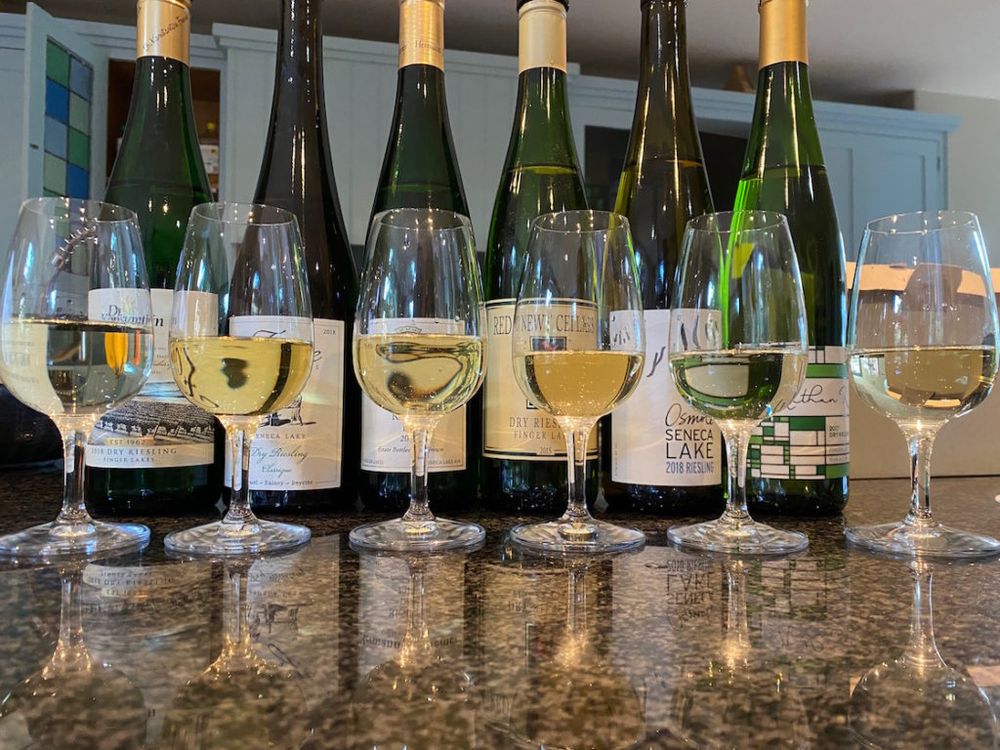
Dry Riesling 2015, Red Newt Cellars, Finger Lakes
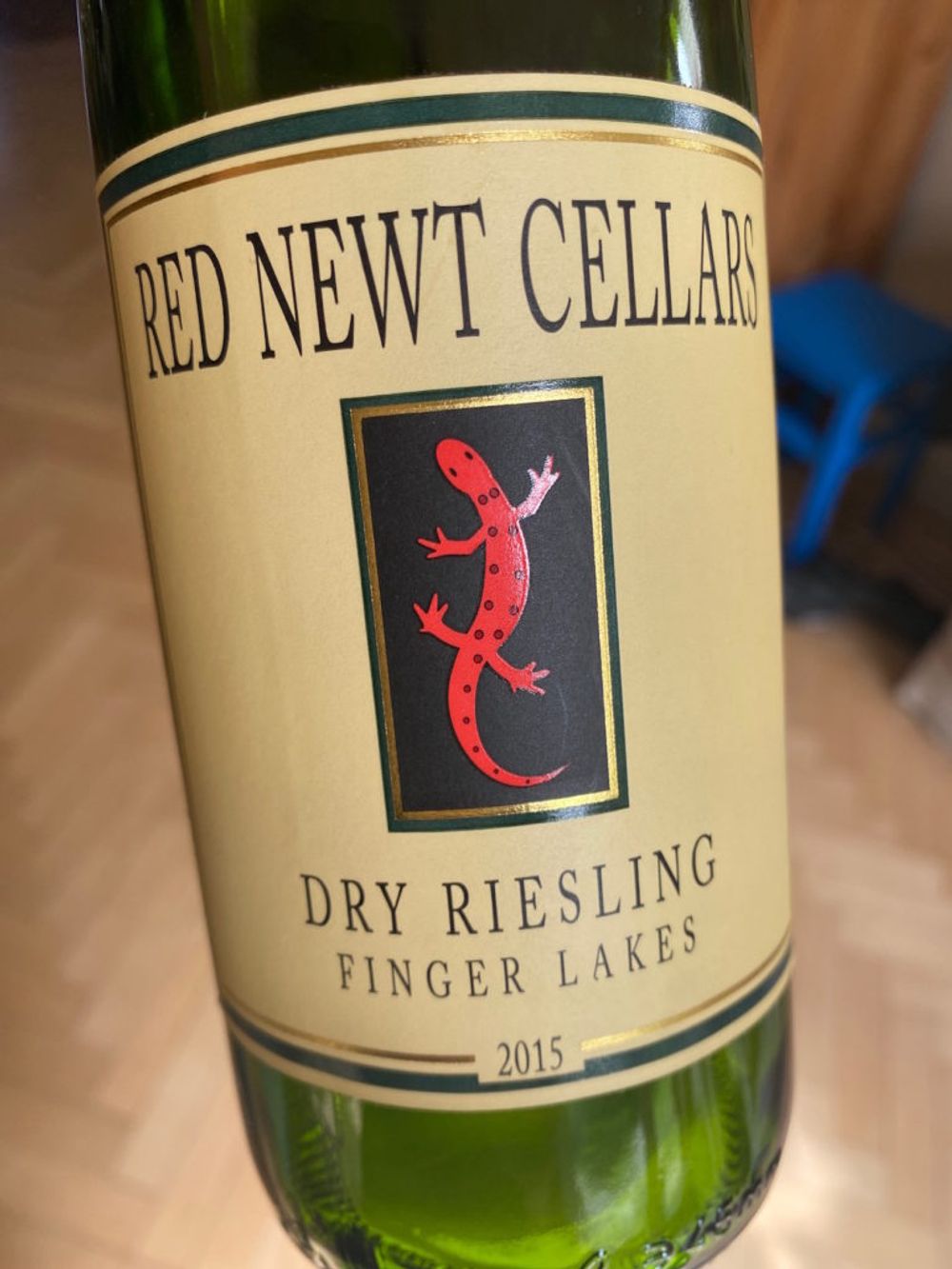
Winemaker Kelby Russell is regarded as one of the top winemakers in the Finger Lakes region, with Red Newt Cellars, which was established 22 years ago, producing one of the most typical and affordable Finger Lakes Rieslings. The winery started with a variety of grapes but now has a real white wine focus on aromatic varieties: Riesling, Gewürztraminer, and Pinot Gris.
Tasting: Very pale green-gold this shows off a classic Finger Lakes style, expressing bright aromas of tangerine and honeysuckle with an elegant palate of citrus and white peach. Given the wine’s age it has also developed a creamy, biscuit note, the tiniest hint of oily rag, but the acidity is still very lively and zippy, with a mineral twang and really nice balance. It doesn’t feel as dry as it is (0.4 gms residual sugar) and the alcohol is 13.2% abv. (Seeking distribution in the UK. Contact Kelby Russell on kelby@rednewt.com)
Dry Riesling 2018, Finger Lakes, Hermann J. Wiemer
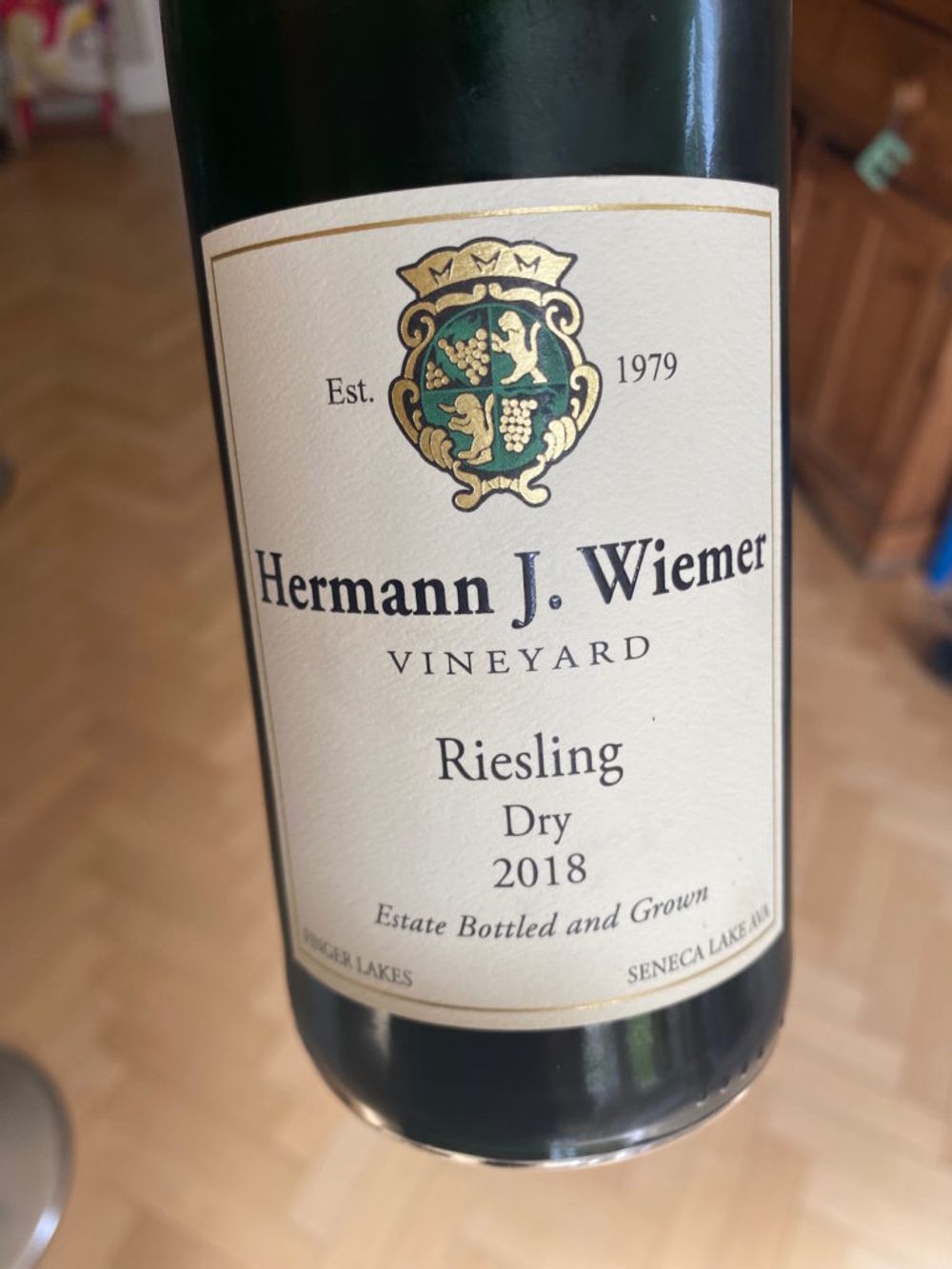
Hermann J. Wiemer was an immigrant from the Mosel and one of the pioneering modern winemakers in Finger Lakes. An early proponent of Riesling, these wines are regarded as being some of the finest not only of New York, but the entire US – having a distinctive floral quality rather than the mineral-driven wines so typical of the region. Wiemer sold the winery in 2007 to Oskar Bynke and Fred Merwarth.
Tasting: On the eye this wine is very pale gold (with what looks like a slight spritz). The fruity nose is pretty with attractive aromas of tangerine, orange peel, white peach, meadow flowers, barley sugar. On the palate the wine is medium-bodied, clean-flavoured, high-toned fruit profile with stone fruit, red apple. There’s an exquisite balance here, with a silky mouthfeel and a lift of citrus juice on the finish. 12% abv (Seeking distribution in the UK: contact Jenny Menges on jenny@wiemer.com)
Dry Riesling 2018, Dr. Konstantin Frank, Finger Lakes,
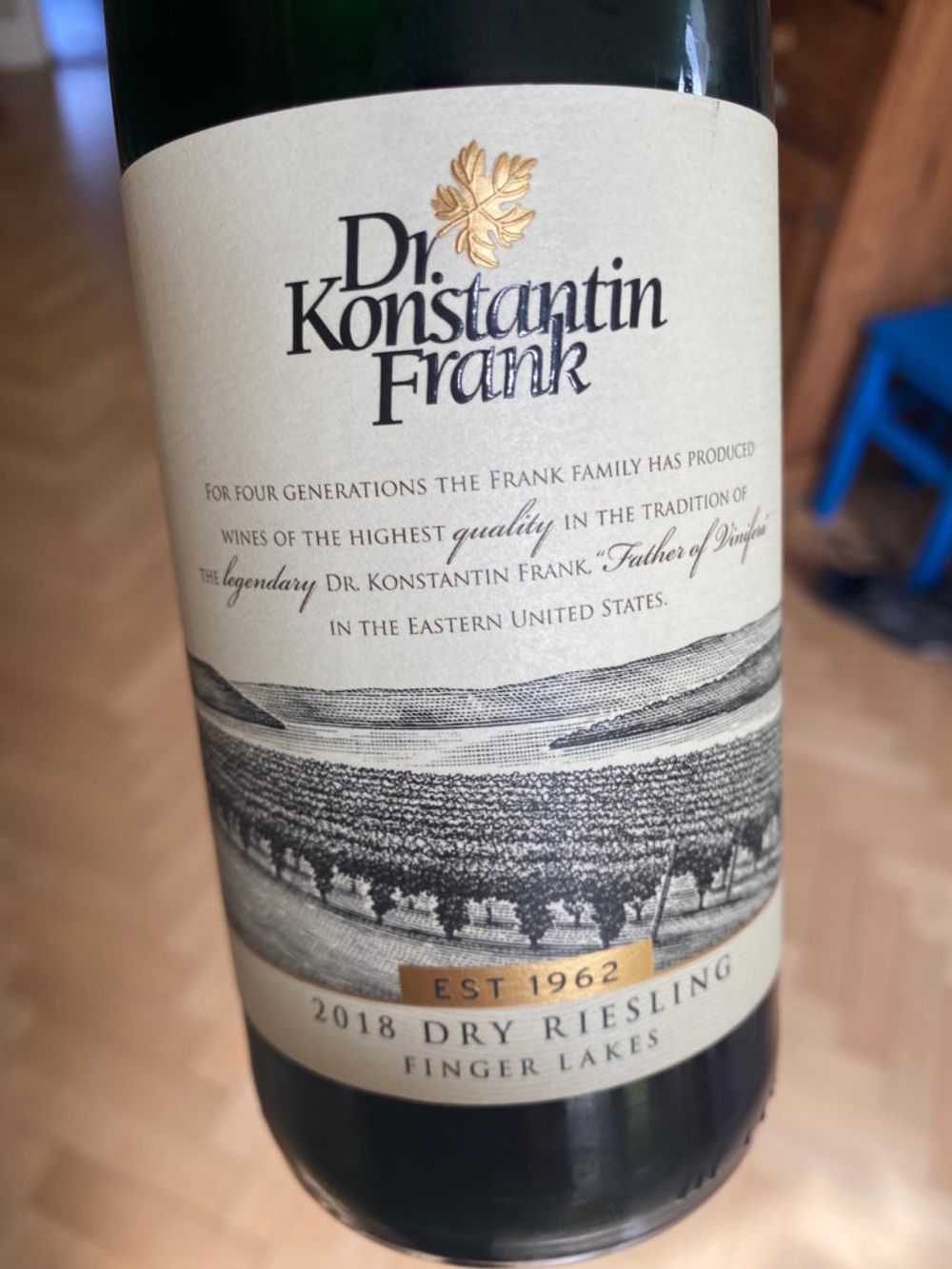
The success of the New York wine scene, if not the entire Eastern United States, owes considerable debt to Dr Konstantin Frank, an immigrant from the Ukraine in the early 1950s. Frank believed that it was the lack of proper rootstock rather than the cold climate which was holding fine wine production back. He grafted phylloxera-resistant rootstocks with vinifera varieties, they took hold and so began the ‘Vinifera Revolution’. With 140 acres, the winery produces 38 different wines today (not taking into account its budget Salmon Run label) including an amber wine made from Rkatsiteli.
Tasting: This Riesling is very pale green-gold on the eye; on the palate the wine is light to medium with notes of pink grapefruit zest, lime, candied citrus. The wine is deceptive, although the nose is complex, the palate feels subtle almost before opening out in the mouth then delivering that distinct Keuka Lake minerality which manifests itself like crushed rocks and lime-driven acidity on the finish. 12% abv. (Matthew Clark)
Dry Riesling Classique 2018, Seneca Lake, Forge Cellars

There is also a European link with Forge Cellars, or a French connection to be more precise. Winemaker Louis Barroul whose family has run Chateau de St. Cosme in the Southern Rhone since 1570, teamed up with friends Rick Rainey and Justin Boyette to make stand-out Riesling and Pinot Noir down an eight-mile stretch of southeast Seneka Lake. They now produce 13 different Rieslings, 11 of them single vineyard, with the Classique wines a blend (of the 16 vineyards it buys fruit from) that tries to capture the Forge style and express the vintage.
Tasting: On the eye this wine is mid to deep gold (from the percentage of the wine that is fermented in used French oak). The wine has more flesh on the bones than some of the Finger Lakes wines – the aromas are ripe, honeyed, with hints of flint, jasmine and mango. The palate is medium weight with lovely balance, and a complex range of flavours that include baked Golden Delicious apple, pear, apricot, quince paste, liquorice root and chamomile flowers. There’s a touch of cream too on the long finish. 12% abv (Bibendum)
Riesling 2018, Seneca Lake, Osmote 9.7%
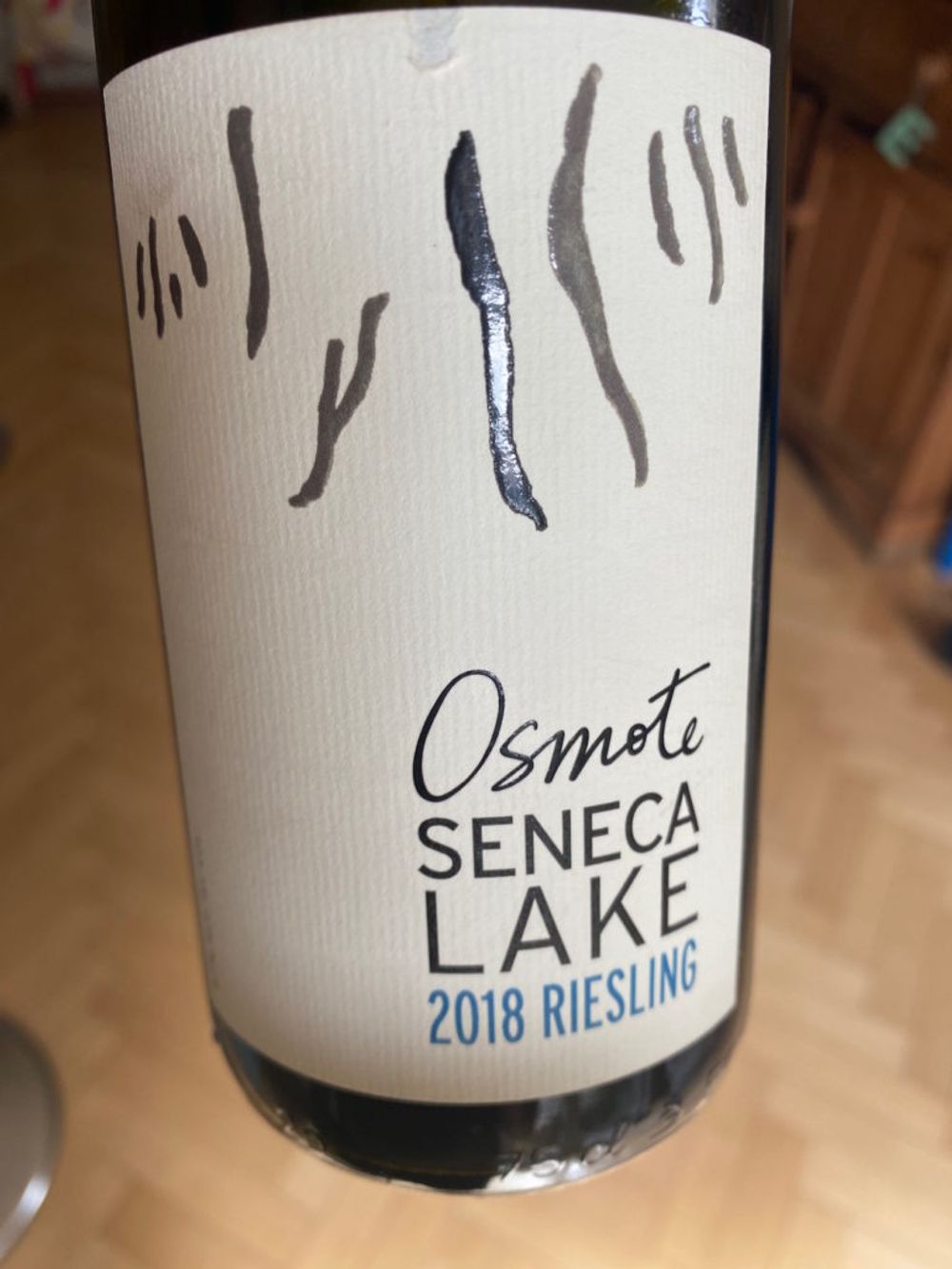
Benjamin Riccardi is a homeboy winemaker who’s returned to his Finger Lake roots after travelling and picking up invaluable experience, most notably in New Zealand’s Craggy Range, where he learnt the art of creating nuanced oak character in large format barrels, and Muddy Water and Greystone where he learned to trust native yeasts and indigenous fermentations. His wines are very much hand-made with minimal intervention.
Tasting: He brings these particular skills to this colourless, almost water-like Riesling, that has a striking bright and floral nose with fresh violets to the fore. It starts pretty and complex and then the attack is nicely chiselled, you really feel the acidity which is textured and slate-like, white peach flavours develop. Precise, bright, focussed wine made with natural yeasts in oversized, neutral barrels to create a texture that will balance a totally dry wine. The fruit was whole bunch pressed, some of the juice directly into barrel. (Currently unavailable in the UK like the rest of Ben’s wines. 9.7% abv. Interested parties should contact him direct on ben@osmotewine.com)
Dry Riesling 2017, Finger Lakes, Nathan K
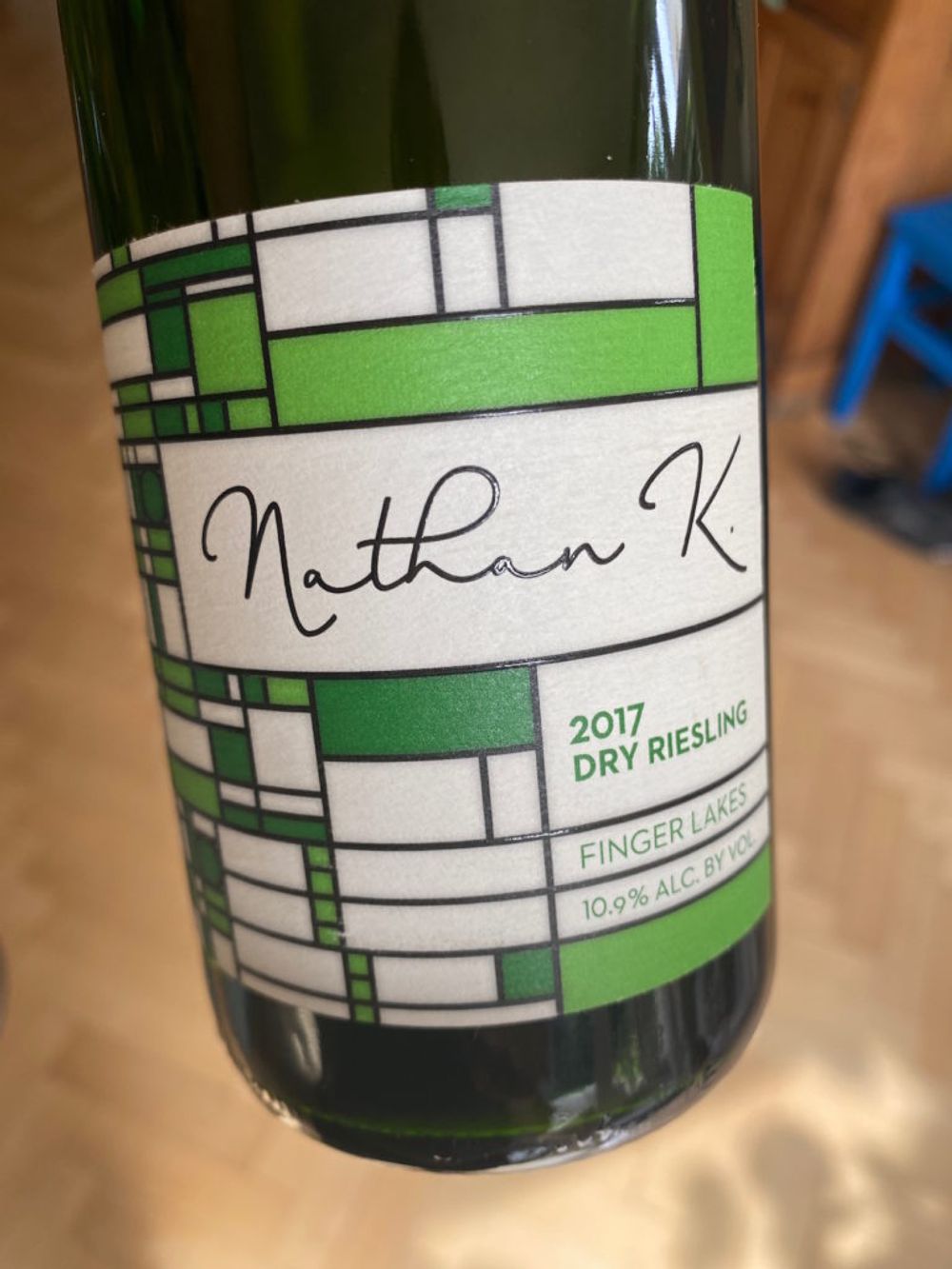
Like Benjamin Riccardi, Nathan Kendall is a Finger Lakes native who gained experience globally with cool climate regions and vatietals in Wairapa, New Zealand and The Mosel in Germany. His aim is to make wines in an Old World style – minimal intervention, spontaneous fermentation, ageing on gross lees for months to enhance texture, carefully racked, not fined and gently filtered before bottling.
Tasting: Like the Osmote wine this is almost colourless. Citrussy notes dominate, reasonable weight in the mid-palate, combining well with lean, almost sharp, fruit, the acidity is lively, with citrus peel and a fine, sandpaper texture (fermented in a combination of neutral French oak and steel). The length is massive – it just simply carries on and on. In a good way. 10.7% abv. (Top Selection)
